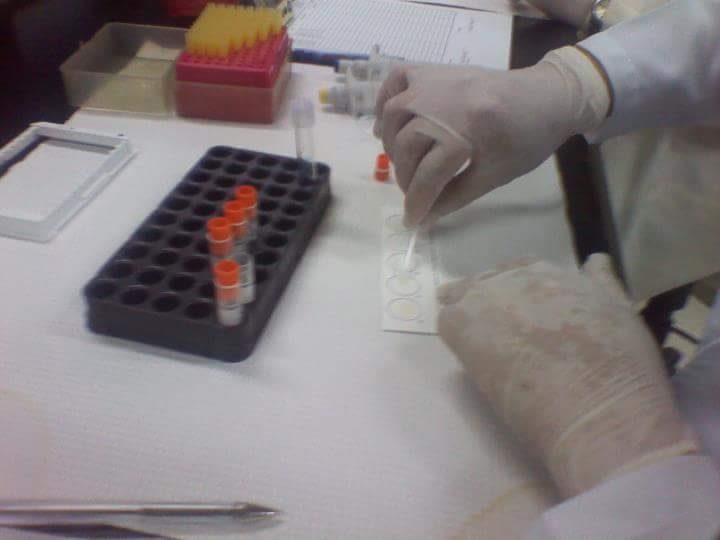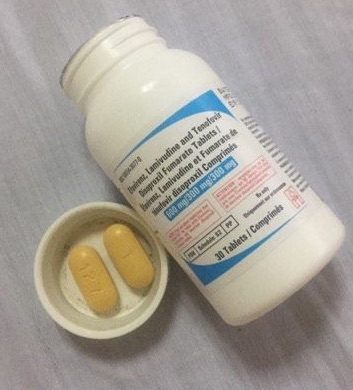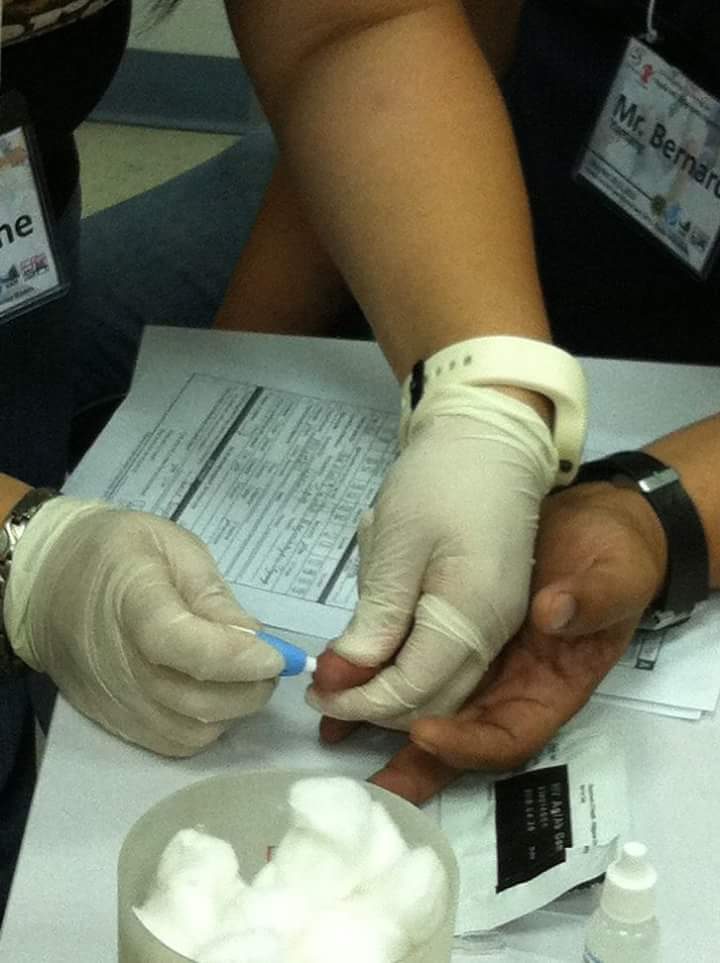SUMMARY
This is AI generated summarization, which may have errors. For context, always refer to the full article.

MANILA, Philippines – Infectious disease experts and persons living with the human immunodeficiency virus (HIV) are asking the government to implement the “treat all” policy, which provides immediate medication to individuals who test HIV-positive regardless of their infection stage.
This is to prolong life and prevent the transmission of the virus to non-infected people, according to a panel of experts that has been discussing the strategy as the number of new HIV infections continues to spiral.
Dr Rossana Ditangco, head of the AIDS Research Group of the Research Institute for Tropical Medicine (RITM), said it is time to raise the alarm and to do an aggressive campaign. The government has projected that, in less than 10 years, more than 90% of Filipinos with HIV will continue to be in the youth group aged 30 and below.
“I don’t have high hopes anymore. We can’t control the rapid rise of HIV infection,” she said. “It is time the government has to treat HIV as a national emergency.”
“Treat all” is in the 2016 guidelines of the World Health Organization (WHO) that recommends treating all HIV-infected persons with antiretroviral drugs straightaway, omitting other tests that indicate their other health determinants. ARV drugs are oral combinations of two or more drugs, called ARV therapy, to stop the replication of and reduce the amount of HIV in the body.
The Department of Health (DOH) is set to issue an administrative order to adopt the global policy, and thus update the national treatment guidelines.
Ditangco said a person who is treated immediately after a positive test will have a high prospect of not having Acquired Immune Deficiency Syndrome (AIDS), the fatal condition caused by HIV.
Ditangco said ARV drugs that patients take throughout their lifetime do not cure HIV but reduces its replication. “It is important that persons receive treatment upon testing. This will lessen their potential to transmit the virus to other people and this ensures the safety of the general population,” she said.
She said HIV kills the CD4 T- lymphocytes, the white blood cells that predict the presence of HIV. When HIV attacks the body, the number of CD4 cells declines. A healthy person’s normal range of CD4 is 500 to 1,500 cells per cubic millimeter. When the amount drops to 200 cells/mm3 and below, a person has stage 3 HIV infection or its terminal stage, AIDS.
‘Viral load test’ to be used
In the initial years, the DOH, following globally-recommended treatment protocols, implemented the 200 CD4 standard – a person with a 200-and-below CD4 is prescribed with the drugs. The government policy changed twice with 300, and of late, 500.

The RITM, the country’s biggest HIV treatment facility, is set to eliminate the CD4 test and will instead provide the “viral load test” that measures the amount of HIV. A high viral load means a high concentration of HIV.
Ditangco said the viral load test is more reliable, and since this is the global “treat all” recommendation, the Philippines will use this and scrap CD4 tests. “If we want a person with HIV to live longer, then we have to treat HIV aggressively, the way we treat SARS and Ebola.”
The move of RITM will also be done in more than 100 other hospitals capable of handling persons with HIV as this is in line with the WHO guidelines.
Dr. Naoko Ishikawa, scientist of the HIV, Hepatitis and Sexually Transmitted Infections Unit of the WHO Western Pacific headquarters in Manila, said the Philippines is one of the few remaining countries to catch up with the guidelines that urged countries experiencing epidemics to discard CD4 immune counts and go straight to medicines.
“After looking at many experiences in HIV treatment, it is better that we start treatment promptly on infected people and not let them wait,” she said in a phone interview. “The treat all policy has been effective in many countries that adopted the guidelines.”
Ishikawa and Ditangco were part of the expert panel. Another expert, Dr. Jose Narciso Melchor Sescon, chief of clinics of the Santa Ana Hospital in Manila, said the discussions revisited government guidelines to align with what is feasible in the country’s settings. They presented their findings and the country’s soon-to-be adopted guidelines to persons living with HIV (PLHIV) last March.
Santa Ana Hospital is one of the country’s newest HIV treatment facilities.
“The PLHIV were happy and they expressed full confidence with the commitment to treat all,” said Sescon. “This treatment approach will help us see a clearer picture of the extent of transmission and improvement in life expectancy.”
Roberto Ruiz, who has been living with HIV for 21 years, lauded the “treat all” strategy. He survived because of the clinical trials by RITM and pharmaceutical companies in 1995. “Every time the trials stop because they ran out of meds, I and my colleagues prepared for the worst. We likened each other to Titanic – we were all dying.”
In 2001, Ruiz and other PLHIVs were introduced to the Indian global pharmaceutical company CIPLA Incorporated. As government support was minimal and purchasing was difficult, the PLHIVs sourced their own medicines by forming a buyers’ pool and identified themselves as HIV-infected to customs officials so that their medicines were released promptly.
“We took advantage of people’s fears at that time. We sent those who really looked sick to customs to claim our medicines,” said Ruiz. “Customs officials were so afraid of us that we managed to demand for tax exemptions. It was hilarious.”
The Positive Action Foundation Philippines, one of the first organizations of Filipinos with HIV, institutionalized the process of transacting for medicines. Its founding president, Joshua Formentera, is one of the longest living Filipinos with HIV. He sourced medicines from abroad as the supplies were few and far between.
“Our meds were crumbs from Europe,” said Ruiz. Later, support came from the Philippine Charity Sweepstakes Office and the Global Fund to Fight AIDS, Tuberculosis, and Malaria.

As of May 2017, the DOH recorded 20,420 PLHIV who were on medication; 97% males. Majority, at 95%, were on first line regimen, 4% were on second line, and 1% on other regimen.
Ditangco said the “first line regimen” combines 3 drugs that prevent the virus from multiplying and attaching to cells. Patients who don’t respond are prescribed the “second line regimen.” The final regimen is called “salvage therapy” – doctors find treatments even if they expect the patient to no longer respond to medication, develop infections, and die. Pneumonia and tuberculosis are the most prevalent causes of death among Filipinos with AIDS.
Biggest challenge
Ditangco said medicines today have lesser side effects with better co-formulations and tolerability. “The benefits outweigh the risks,” she said. In the 1980s, the RITM prescribed the monotherapy AZT. In the 1990s came the “cocktails” or drug combinations. Patients suffered from physical and psychological side effects such as diarrhea, dizziness, muscle pain and depression.
Vincent Mark, a PLHIV who is on first line drugs, said he believes in why persons who take in their medication religiously would eventually experience a lessened viral load or a decreased amount of HIV, with some testing “undetectable” levels.
“Undetectable is the new negative – that’s a joke among ourselves. But on the serious side, we made this our goal,” he said. Global researches have also noted that HIV-infected persons with lessened or undetectable vial loads may already be considered non-infectious.
The government spent P180 million worth of ARV drugs in 2015. The budget rose to P1 billion in 2016 and expects to increase spending on more drugs, test kits and reagents, as well as patients’ health complications.
Ditangco said the biggest challenge now is the virulence of the virus that has manifested among patients in the last 5 years.
“The virus mutates, and this has been observed in about 5% of PLHIVs.” She cautioned that 5% is already an upsurge in the volatile HIV and AIDS landscape. “There’s also a new strain of HIV that rapidly progresses into AIDS, although we knew that HIV-1 is the strain responsible for the majority of infections worldwide.”
The May 2017 government update noted that of the 44,010 cases in its record, 93% are male, 7% female; 78% are 15-34. Of the total cumulative number, 81% was reported in January to May 2017 alone, and this made the government peg at 29 the number of new infections daily.
The Philippines has the highest increase, at 141%, of annual new infections from 2010 to 2016 across countries in Asia Pacific, according to the 2017 report of the UNAIDS. The epidemic is driven by high concentration of infections among men who have sex with men, people who inject drugs, and sex workers and their clients. – Rappler.com
Add a comment
How does this make you feel?
There are no comments yet. Add your comment to start the conversation.